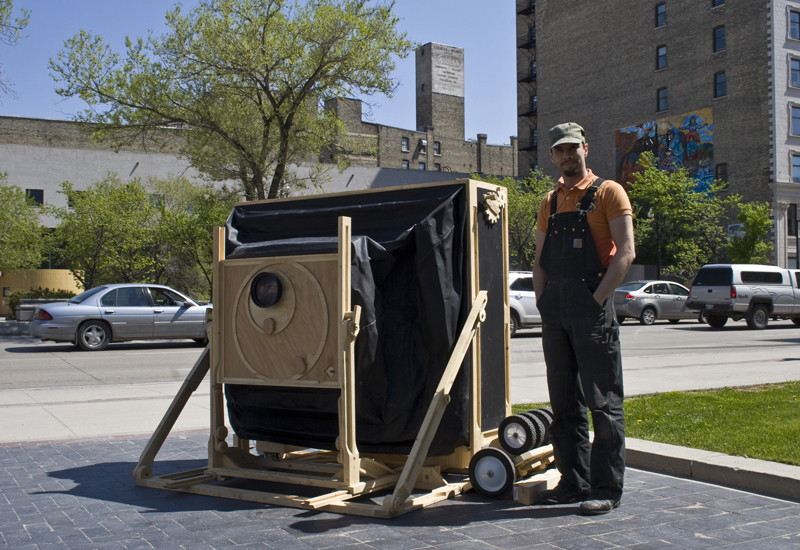Artist explores new way of making photographs with large, homemade wooden camera
Andrew Milne is an artist with a knack for creating the inspiring. With a background in dance and wood sculpture, Milne says that the “dialogue between the two [mediums] came together in the camera.”
Using his talents to create an extremely large wooden camera (it’s large enough for two people to sit inside it), Milne creates photographic prints that he says “go where digital photography [can’t] go.”
Since a conventional photograph is made with the photographer outside of the camera, it is experienced differently, Milne explains.
“By pushing beyond the expectations of size [of a photograph] the viewer interacts with the photographs in a new way.”
Milne’s process can take up to three hours. He prepares the negative, sets up the camera and exposes the image – a method that fell out of common practice once the 35mm camera was invented in the early 1900s.
Using traditional techniques on a large scale, Milne captures the city’s architecture on 3’ x 3’ sheets of glass. The process involves coating a sheet of glass with liquid light, a solution that is light sensitive.
It is held in ‘dark slide’ until ready to be used. The camera is focused from the inside, then the negative is placed in its holder and the dark slide removed.
When ready to expose, the time can be from 10 seconds to two minutes.
“I’m trying to get closer to the physicality [of the image], but I’m not quite there yet,” Milne says. “[The negative] becomes a kind of original artifact of the place it represents.”
“The process is exciting, it opens new possibilities,” he adds. “With this exhibit, I’m scratching the surface of what can be done.”
Using acrylic ink and overprinting techniques, Milne’s photographs take on a painterly look.
The series he is debuting at Zephaniah Gallery on Thursday, June 9 has to do with a narrative of his own past and the interest in “the technological and philosophical conversation of sacred spaces juxtaposed with modern forms.”
“Technology is generating a new sacredness,” Milne explains. “Technology exists without us, we interact with the humanness behind that technology.”
This is what makes the size of the camera so important. Not only does it allow for a new way of viewing a photograph, it allows for the artist (or anyone) to be inside the machine.
Milne is an artist who is literally in his work.
Milne’s work is featured in Representational Technologies: Images for the End of an Age, an exhibit opening Thursday, June 9 at Zephaniah Gallery (3-374 Donald St.) at 7:30 p.m. The gallery is then open June 11 to 19 from 12 p.m. to 6 p.m. Visit www.andrewmilne.tumblr.com.
Published in Volume 65, Number 26 of The Uniter (June 2, 2011)







